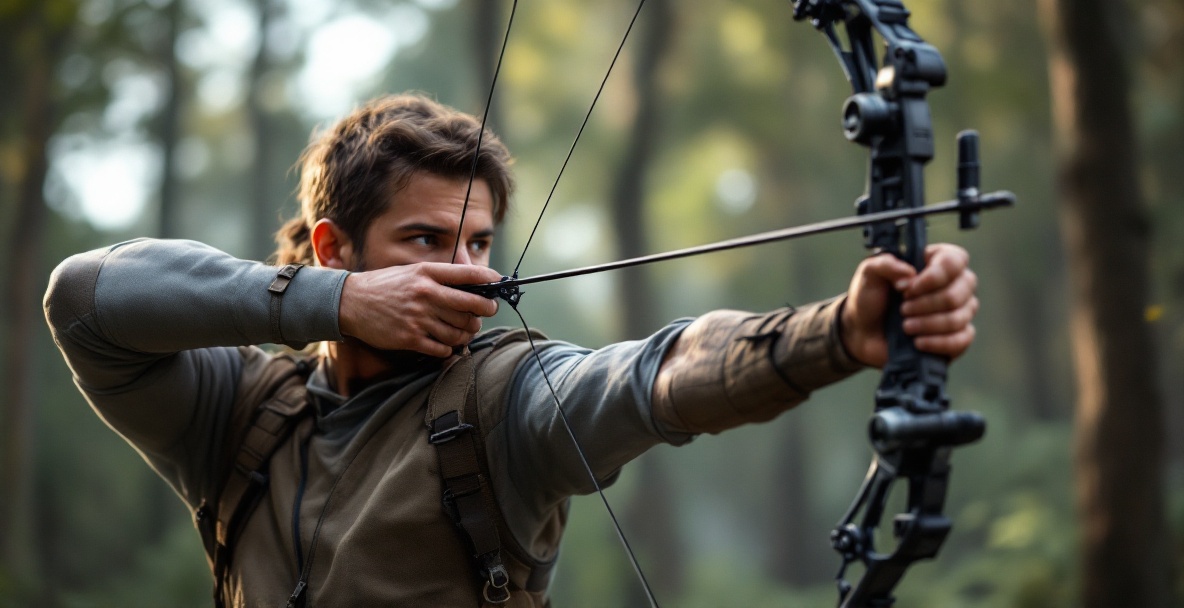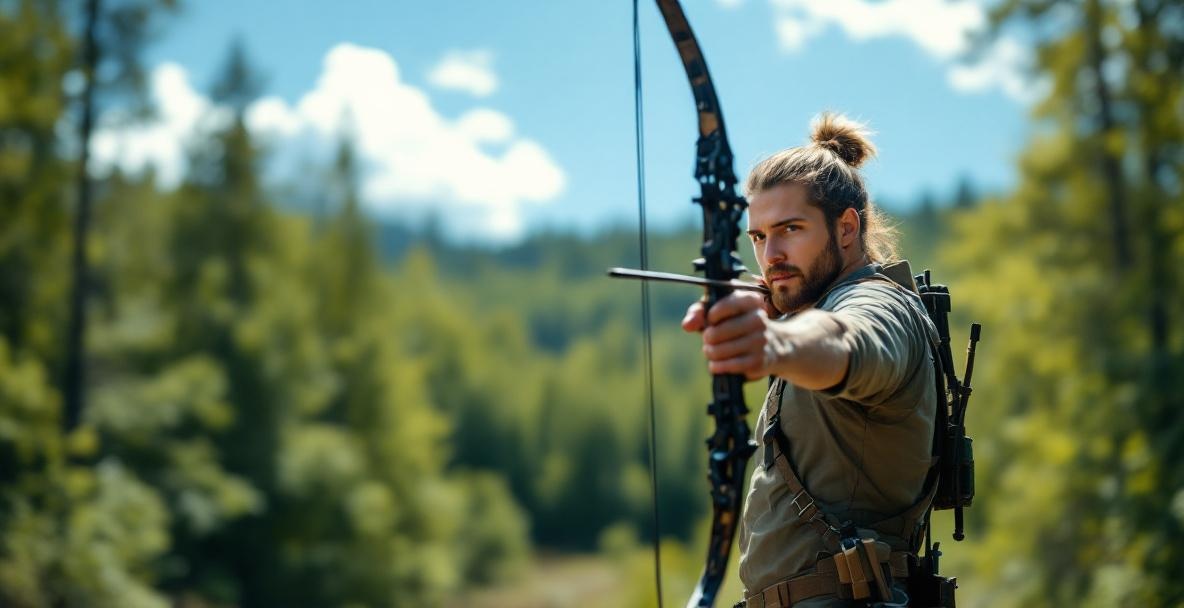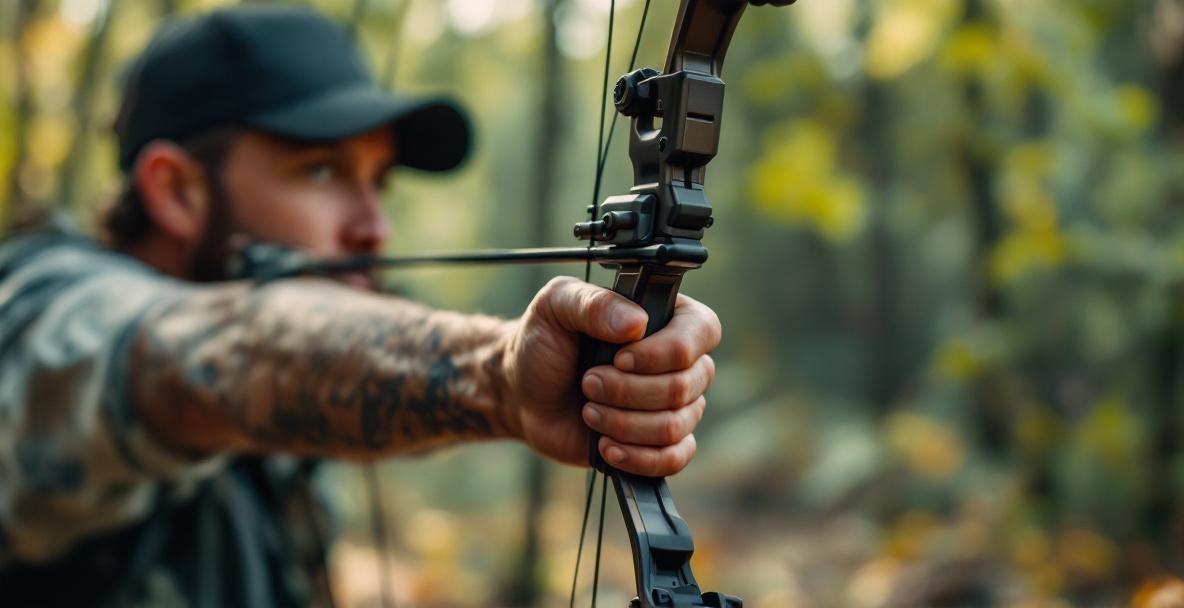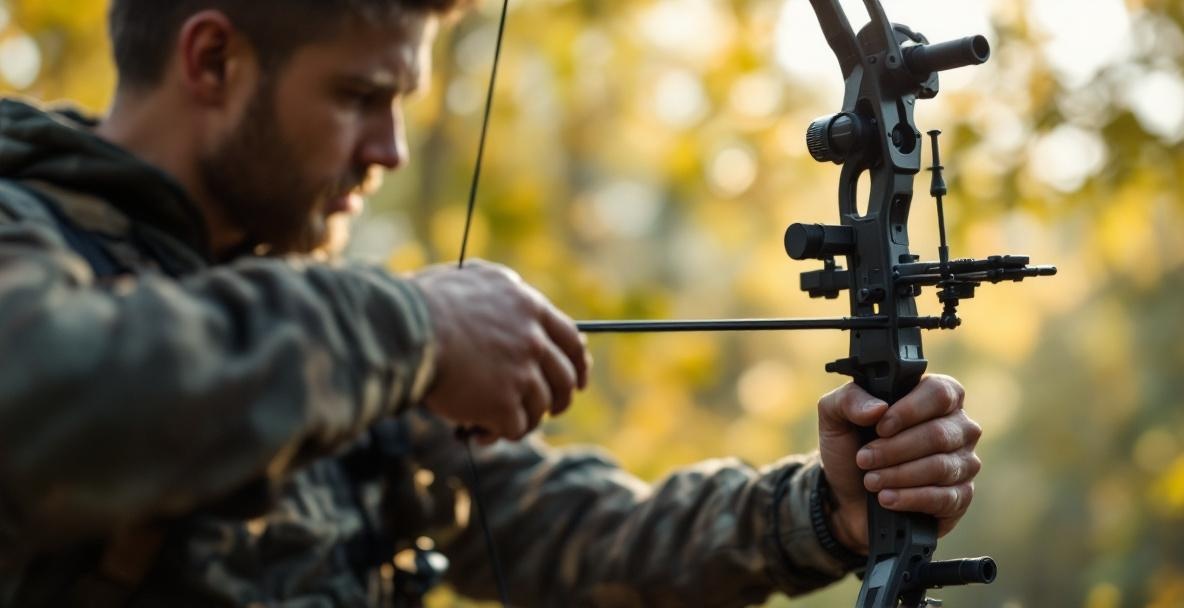What Is Bow Draw Weight All About?

"The draw weight is the key factor that impacts both your shooting comfort and your arrow's flight."
Learning this early gives you a head start and helps you avoid the common setbacks new archers face.
When you first pick up a bow, figuring out its draw weight is essential. It controls how easy it is to pull the string, how steady your aim feels, and even how well your arrow flies. Many archers have a tough time choosing the right weight, which can lead to frustration or even injury. We want to break this down so you can choose gear that fits you perfectly and enjoy every shot with confidence.
The Basics of Knowing Your Bow's Weight
Draw weight tells you the amount of force needed to pull the bowstring all the way back; it is measured in pounds. Think of it as the resistance you feel when you pull the string. For example, if you draw a 40-pound bow, you are essentially lifting 40 pounds with your arm and back. This force converts to the energy that speeds your arrow when released.
| Bow Type | How Weight Rises | What It Feels Like at Full Draw | Let-Off Typically | Best For |
|---|---|---|---|---|
| Recurve | Steady increase to a peak | Consistent tension | 0 % | Traditional target shooting, instinct shooting |
| Longbow | Smooth, linear pull | Fixed tension | 0 % | Historical archery, field rounds |
| Compound | Rises then eases near the end | Lighter feel at full draw | 65-90 % | Hunting, fast-paced target work |
Choosing a bow with a draw-weight profile that fits your shooting style is as important as the actual poundage you choose.
Getting it right matters. If your bow is too heavy, you may struggle with consistency and even risk injury. If it is too light, your arrow might lack the power it needs. For target shooters, the draw weight affects arrow speed and stability. Hunters need that extra force for a clean shot. A balanced draw weight works hand in hand with a good stabilizer system, like OneX Archery stabilizer weights, to keep your shots on point.
Clearing Up Common Myths
Some new archers think that a heavier bow always means a better shot. Many even believe that picking a big number shows strength and automatically boosts performance. The truth is that consistent form and comfort matter far more than raw power. Start with a weight that you can control well-it builds good habits and helps prevent injury.
There is also confusion between draw weight and draw length. Draw length is how far you pull the string, while draw weight is how hard you have to pull it. Although related, they are not the same. For instance, a 40-pound recurve bow will feel very different from a 40-pound compound bow because the compound uses a cam system and has an easier pull near the end. Understanding these differences can help you choose the right bow and build the proper muscles, as shown in this guide.
Why Bow Draw Weight Is Important

Picking a bow isn’t just about the numbers. It’s about finding a weight that matches your shooting style and your strength. OneX Archery knows that a right-sized draw weight can boost both your accuracy and your comfort. Whether you are a beginner or fine-tuning your competition setup, the perfect draw weight sets you up for a rewarding experience and lets your stabilizer weights do their job.
Impact on Your Shot
When your draw weight is just right, you can maintain good form with every shot. A proper weight gives your arrow more power and a steadier flight. A heavier draw adds speed and results in a flatter trajectory, which is very helpful at longer ranges. Many top archers adjust their gear to find that happy medium of power and control.
| Draw Weight (lbs) | Approx. Arrow Speed* (fps) | Effective Target Range | Common Use |
|---|---|---|---|
| 25 | 140-160 | Up to 30 yd | Youth or beginner target |
| 35 | 170-190 | Up to 40 yd | Recreational target |
| 45 | 200-220 | Up to 55 yd | 3-D and field shooting |
| 55 | 230-250 | Up to 70 yd | General hunting |
| 65+ | 260-300+ | 80 yd + | Big-game or competition |
*Speeds measured with a 400-grain arrow on modern compound setups.
When the bow feels right, your shots tend to group together and hit closer to the mark. But if the weight is too high, your form may start to suffer, and your arrows may not hit as accurately. Matching your bow to your personal strength improves energy transfer, reduces wasted energy, and minimizes shake. This is why our OneX Archery stabilizer weights are made to work seamlessly with your draw weight.
Taking Care of Your Body
Using a bow with too high a draw weight wears you out fast, messes up your form, and can even cause injuries like shoulder or rotator cuff strain. Listen to your body, because its signals are the best indicator of whether you’re ready to increase the weight or not.
Every shot uses your back, shoulders, and arms. Choosing a weight that is too heavy may lead to premature fatigue and potential injuries. Many archers start with lighter weights and incorporate special exercises to build the muscles they need for shooting.
| Archer Profile | Recommended Starting Weight | Why It Matters |
|---|---|---|
| Youth (10-14 yrs) | 10-20 lbs | Protects developing joints |
| Adult Beginner | 15-25 lbs | Focuses on form without stress |
| Adult Intermediate | 25-40 lbs | Supports longer practice sessions |
| Bowhunter | 40-70 lbs* | Needed for ethical penetration |
| Competitive Compound | 45-60 lbs | Balances speed with reducing fatigue |
*Check local regulations — many states require at least 40-45 lbs for big-game hunting.
Long shooting sessions make these physical concerns even more important. Even if you can pull a heavy bow for one quick shot, holding that weight for a long time is another matter. For beginners and growing archers, starting light and increasing gradually helps protect your muscles and joints.
Finding Your Perfect Draw Weight

Choosing the right draw weight is a personal journey. It depends on your strength, skill, and the purpose of your archery. A weight that works for one person may not work for someone else. At OneX Archery, we have helped many archers find that sweet spot. The right draw weight makes your shooting more accurate and helps you enjoy each session even more.
Things to Consider
Think about your experience level first. If you are just starting out, choose a lighter weight, usually between 15-25 pounds for adults. Once your muscles build up, you can gradually move to a heavier bow. It is better to start easy and work up steadily than to jump in too heavy and risk injury.
Your physical build also matters. If you are tall and strong, you might be comfortable with a higher draw weight. But do not let pride force you into a weight that is too heavy; even experienced archers sometimes choose lighter weights to avoid fatigue. What you plan to do matters too. Target shooters often favor lighter bows for longer practice sessions, while hunters need more weight for a clean, ethical shot. Always check the rules if you plan to compete.
Trying Out Different Weights
A good draw weight lets you shoot comfortably for long sessions while keeping a steady form. The best way to find your match is to try out different bows. Visit an archery shop where experts can help you test various weights. Watch how smoothly you can pull the string and how steady your stance stays. If you feel tense or shaky, the weight might be too high.
Take note of your overall comfort. Do your shoulders stay relaxed? Does your posture hold after multiple shots? If fatigue creeps in quickly, it may be time to try a lighter option. Testing with a full setup, including your OneX Archery stabilizer weights, can show you how well the bow works with everything combined. Remember, your perfect weight might change as you build strength, so remain open to adjustments.
Building Up and Adjusting Your Draw Weight

As you improve in archery, you may find that a heavier draw weight suits you better. Increasing the weight is about gaining more power, but it should come along with better form and stronger muscles. Moving up in weight takes time and careful practice so you can keep your shots on target and avoid injuries.
Tips for Getting Stronger
Building the muscles you use when shooting requires regular, focused exercise. Your back, shoulders, and core are key. A routine designed for archery can help you move gradually to a heavier draw. Band pulls are great for simulating the drawing action without risking injury. Also, practicing blank shots – firing without a target – helps you focus on perfecting your form and building muscle memory over time.
Trust What Your Body Tells You
The best advice is to listen to your body. Pushing too hard too soon can lead to pain in your shoulders or elbows. Mild tiredness is natural, but pain that lingers is a warning sign. As noted in safety guidelines, it is always smarter to ease up than to risk injury.
Selecting a draw weight that is too high is one of the most common reasons archers get hurt. It is best to increase your weight by only 2-3 pounds at a time and practice consistently at the new weight for a few weeks before moving on. Many archers find that a proper stabilization system from OneX Archery makes the current weight feel more manageable by reducing vibration and enhancing balance. Finding the right weight is a gradual journey-build up slowly and keep an eye on your form.
Wrapping Up: Mastering Your Bow Draw Weight
Throughout this guide, we have looked at how draw weight influences every aspect of your shooting. It is not just a number; it defines your form, accuracy, and the enjoyment you get from archery. Finding the perfect bow weight is a personal journey that evolves as you improve.
A bow with the right draw weight offers a balance of power and control. When it is too light, your arrow might lack the needed force. Too heavy, and your form can suffer, leading to unpredictable shots. That is why we at OneX Archery believe in matching your gear to your unique needs.
Keep in mind that as you progress, your ideal weight may change. What feels challenging now might feel easy later when you build strength and refine your technique. Check out archery-specific exercises to help keep your muscles strong and your form sharp. Always be ready to adjust your setup as you grow.
When fine-tuning your bow, remember that draw weight has to work well with all the parts of your equipment. A good stabilizer system plays its part in cutting down vibration and keeping your bow balanced. OneX Archery stabilizer weights are designed to lower hand shock and smooth your shot cycle.
For those looking to move ahead in archery, consider these key steps:
- Work with a qualified coach or experienced archer to evaluate your current form
- Gradually increase your draw weight in small increments (2-3 pounds at a time)
- Practice regularly at your current weight before advancing
- Pay attention to how your equipment responds to changes in draw weight
- Consider how accessories like stabilizers can enhance performance at your chosen draw weight
When you choose your draw weight with care and patience, you not only build strength but also develop the smooth technique that sets great archers apart.
Ready to take your archery performance to the next level? Explore OneX Archery's premium stabilizer weight systems designed to complement your ideal draw weight and enhance your shooting stability. Our precision-engineered weights can help you maximize the benefits of your carefully selected draw weight while minimizing unwanted vibration and improving overall control. Share your draw weight journey in the comments below-we'd love to hear about your experiences and answer any questions you might have!
Leave a Reply